Exploring the art of social change
The Community Arts Project (CAP) was a public art centre that was based in Cape Town from 1977 until its demise in 2008

For researchers interested in the art of resistance and political engagement, the Community Arts Project archive is a rich resource of press clippings, newsletters, minutes and other documents that chart the rocky history of cultural resistance in the Western Cape.
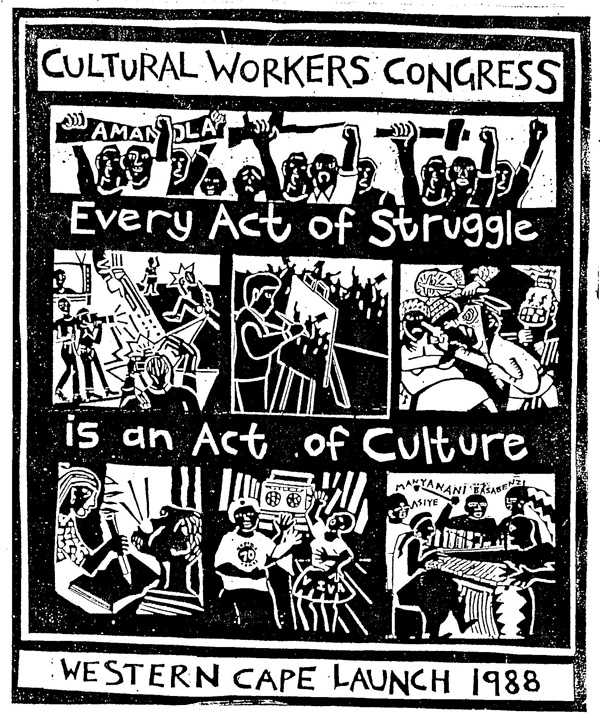
The Community Arts Project (CAP) was a public art centre that was based in Cape Town from 1977 until its demise in 2008. It played a crucial role in Cape Town’s cultural life, particularly in the years of resistance to and transition from apartheid. Community art centres provided black artists with access to training, resources, materials and networks during a time when apartheid barred them from mainstream arts education institutions in the country. They also provided a space for non-racial connectivity in the arts at the height of apartheid.
The Polly Street Art Centre, and Rorke’s Drift in rural KwaZulu-Natal were forerunners, while a more politicised generation of centres, including CAP, FUBA (the Federated Union of Black Artists), Funda, the Johannesburg Art Foundation and Katlehong art centres emerged following the Soweto Uprising of 1976. The Fordsburg Artists’ Studios (Bag Factory) and the Artist Proof Studio, in some ways, carry this legacy forward. These community art centres have provided facilities, training and opportunities to hundreds of artists over the years and some of today’s leading artists emerged out of them.
In Cape Town, the Community Arts Project played a critical role during the struggle. Following the 1982 Culture and Resistance conference in Gaborone, CAP established a poster workshop (later the Media Project, and subsequently Media Works) that was responsible for most of the silkscreen posters and T-shirts produced in the Western Cape as well as many of the large, painted banners that featured in political events. Some of the artists who were involved in the poster/media workshop are Jon Berndt, Trish de Villiers, Lionel Davis, Gaby Cheminais, Martin Stevens and Chris Mtiya.
CAP’s visual archive (artworks and photographs) is housed at the University of the Western Cape, and from 16 August – 30 September 2012, the Iziko South African National Gallery presented an exhibition called Uncontained: Opening the Community Arts Project Archive .VOLonkLlelI, which was curated by the Centre for Humanities Research at UWC. Most of the prints on exhibition were from the turbulent 1980s, the decade marked in history as the final push against apartheid.
CAP’s print records are housed at UCT. This CAP archive comprises press clippings, newsletters, minutes, reports, organisational evaluations – all incredibly useful documents in terms of understanding the history of cultural resistance politics in South Africa. For visual arts researchers who are interested in more politically engaged work, this archive is a rich resource.
The archives of the Cultural Workers Congress, the Visual Arts Group, the Arts and Cultural Development Network and the Federation of South African Cultural Organisations had been deposited at CAP, and have consequently become entangled in the CAP archive. So it is not just the history of CAP that is recorded in this archive, but also that of related cultural organisations. We have been trying to organise the information so that it pertains to each distinct organisation. The Humanitec project has made possible the digitization of key elements of this archive.
‘There were minutes, photographs, news clippings, newsletters – a huge amount of material that had been kept on file. There was all this material dating back to the organisation’s beginning in 1977, and I realised what an incredibly rich resource it was.’
I worked at CAP for seven years in the 1990s. While I was there, I became strongly drawn to the history of the organisation in the form of the documents and information that I found there. There were minutes, photographs, news clippings, newsletters – a huge amount of material that had been kept on file. There was all this material dating back to the organisation’s beginning in 1977, and I realised what an incredibly rich resource it was.
You’d find some documents in a cubboard, others in another room entirely, but it was mostly there. CAP couldn’t afford an archivist, so I invested a lot of my own time in sorting through it all. The material records the history of CAP as part of a network of arts centres that have consisted historically in South Africa –- particularly a generation of them that emerged post the Soweto Uprising of 1976. The records of most of those organisations are not intact and here was an organisation with its records intact. The material wasn’t properly organised, but a lot of it was there.
‘The history of CAP is an incredible who’s who of political figures like Zoe Kota, Lynn Brown and Bulelani Ngcuka, and popular figures, like the late Brenda Fassie. Almost every black artist of significance from this province of a certain generation went through CAP because there was no other space for them to go to.’
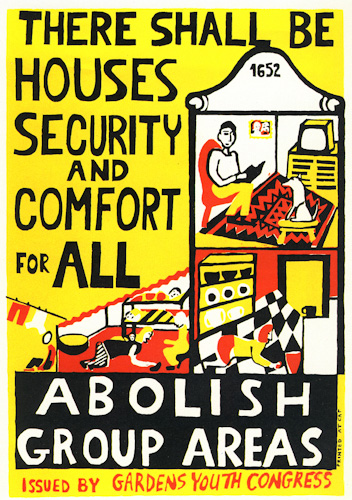 Read Pissarra's full bio...
Read Pissarra's full bio...
The history of CAP is an incredible who’s who of political figures like Zoe Kota, Lynn Brown and Bulelani Ngcuka, and popular figures, like the late Brenda Fassie.
Almost every black artist of significance from this province of a certain generation went through CAP because there was no other space for them to go to – artists like Lionel Davis, Tyrone Appollis, Ishmael Thyssen, Hamilton Budaza, Xolile Mtakatya, Soloman Siko, Billy Mandindi, Vuyile Voyiya, Sipho Hlati, Sophie Peters, David Hlongwane, Ricky Dyaloyi, Vuyisane Mgijima, Willie Bester, Mandla Vanyaza, Thami Kiti, Thembinkosi Goniwe, Dathini Mzayiya and Ndikhumbule Ngqinambi. And not just black artists. Progressive artists, like Manfred Zylla, did a lot of stuff there too. Also teachers; many people taught there, and UCT lecturers, like Gavin Younge, Peggy Delport and Patricia Atkinson were active in the early years. Cecil Skotnes also taught there for several years. Over time, you had people who’d moved through CAP becoming teachers – people like Lionel Davis, Sophie Peters, Lungile Bam, Sipho Hlati, Thembinkosi Goniwe, Anthony Mhayi and others.
‘People tend to retrospectively essentialise or romanticise CAP. They extract a reductive narrative, which is a total distortion of what the place was actually like. CAP did not have a very linear history; it was always reinventing itself due to funding crises… It was a very organic, haphazard, chaotic kind of an organisation, but it was also an amazing incubator of talent.’
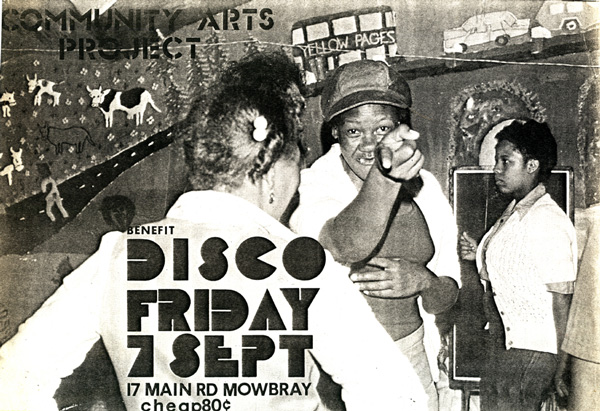
People tend to retrospectively essentialise or romanticise CAP. The reductive master narratives about resistance art are hugely problematic – a distortion of what the place was actually like. CAP does not have a very linear history; it was always reinventing itself due to funding crises. Most people would survive at CAP for about a year and then get burnt out and leave, and new people would come with their own bold new ideas, not always building on the institutional memory. It was a very organic, haphazard, chaotic kind of an organisation, but it was also an amazing incubator of talent.
For me this digitisation project is about trying to preserve and engage with the historical record more thoroughly, because when people refer back to CAP nowadays there is a big risk of misrepresentation. That can only happen if you haven’t done the work or been introduced to what a complicated history CAP actually had.
CAP’s mission was hugely contested; it centred around different understandings of ‘community’ and what ‘community arts’ meant. For a lot of people, ‘community’ meant black people, so ‘community arts’ meant arts for black people who didn’t have access. Then, particularly in the 1990s, ‘community arts’ came to be seen as a process-driven approach – engaging with communities needed to be central to how you worked. These definitions were always fiercely contested and very few people sustained a link to the organisation over many years. Most people knew CAP during a period and they got burned and never wanted to go back.
There were times when the students tackled the staff about what constituted the organisation – who had the right to power. And there were other times when it was the staff fighting among themselves. It was an intense place. There was always a huge pressure on the organisation to justify itself as being relevant. Everyone had to justify their presence there, and it got dirty, it got personal. At the same time, work was always happening.
At first, CAP’s premises were in one shared space in Mowbray; people erected screens and hung curtains to separate activities. Then the organisation moved to Chapel Street – an old school attached to an old church. It was an sort of L-shaped building – one side was a double storey with lots of rooms, so you could have activities in the different rooms. Some rooms were equipped. There was a room with a printing press, a room with workbenches where people could carve, a small dark room. But a lot of the rooms were multi-purpose. The hall would be used by drama people, but it would get used for other gatherings as well.
‘It is when you realise who was present and what they were talking about that things get interesting. You can make sense of key figures in the public arts and cultural sector by looking at that period.’
Our aim with this Humanitec project is to make CAP’s written archive more accessible to people so that it can be used for research. To start with, we’ve been creating more detailed indexes of what is there. Prior to the Humanitec project, we developed a detailed inventory of trustee minutes up to 1994, so that you can see when the meeting took place, who was present, and what was discussed. So now there is a record of what happened, presented in a way that makes it possible for a researcher to use the material.
It is when you realise who was present and what they were talking about that things get interesting. You can make sense of key figures in the public arts and cultural sector by looking at that period. So there are all kinds of uses that can come out of this archive as a research tool.
As ASAI (Africa South Art Initiative), we have embarked on a project called People’s Culture that looks at the history of arts organisations within the anti-apartheid movement. Some of these archives are now in institutions like museums and universities, but these institutions don’t necessarily prioritise this material. ASAI is a platform for research that spans these organisational collections. We are also working with individuals who were active with these organisations, who kept their own records and memorabilia. We would like this archive to feed into broader initiatives that not only provide a more comprehensive view of the organisation, but the whole social cultural and milieu of people’s culture.


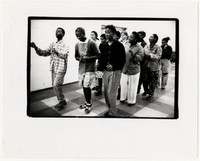


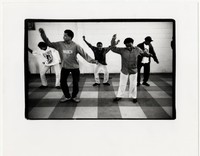
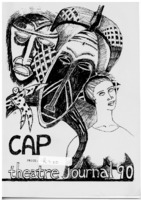




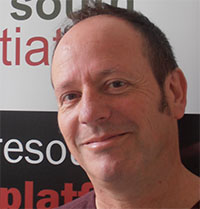 Mario Pissarra is an art historian, PhD candidate, and founder of the
Mario Pissarra is an art historian, PhD candidate, and founder of the 